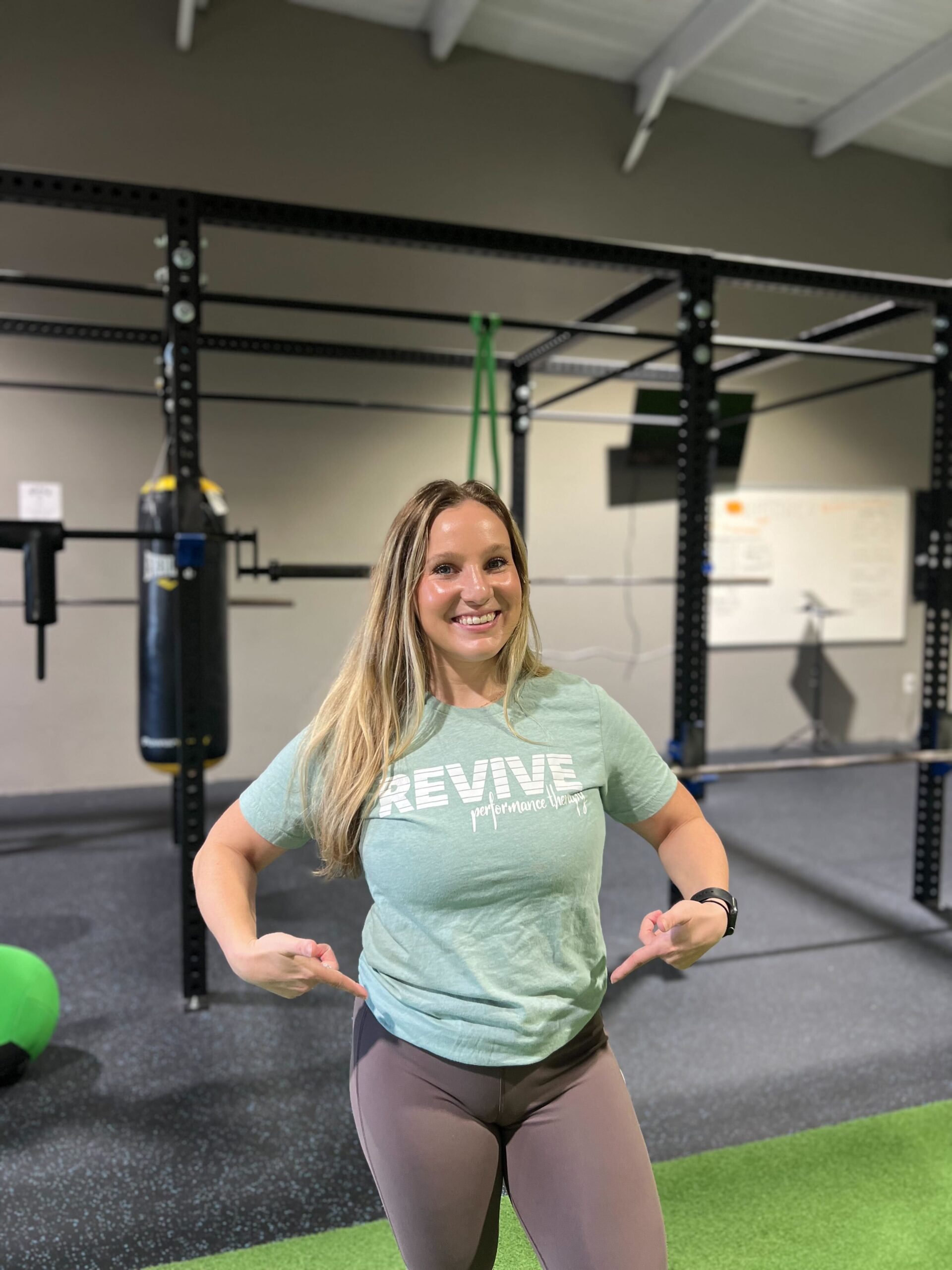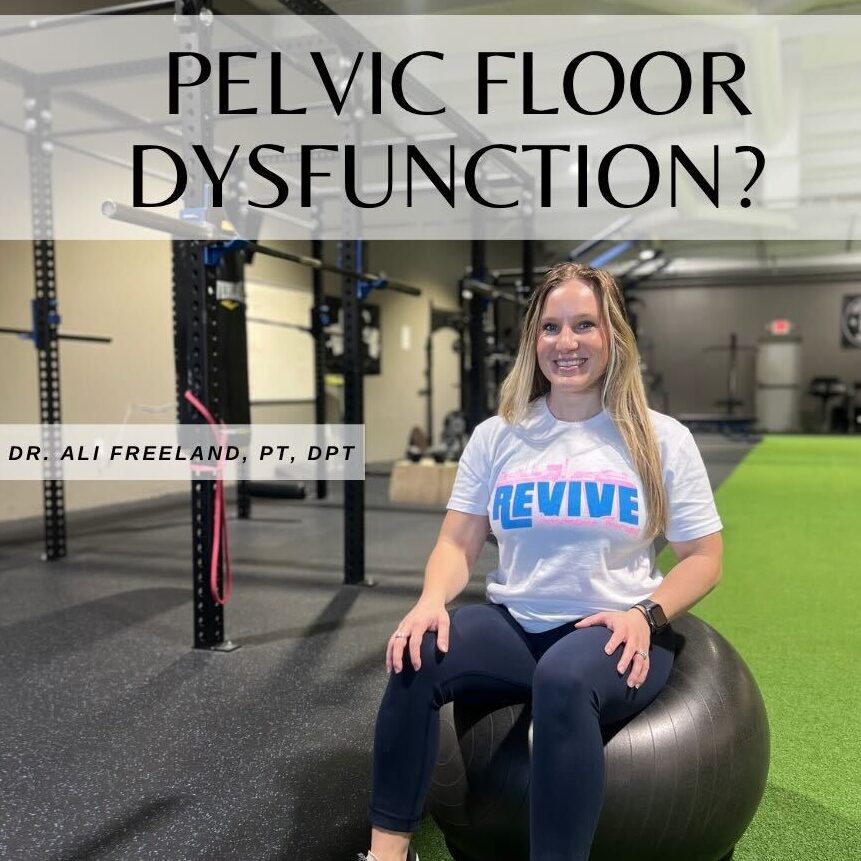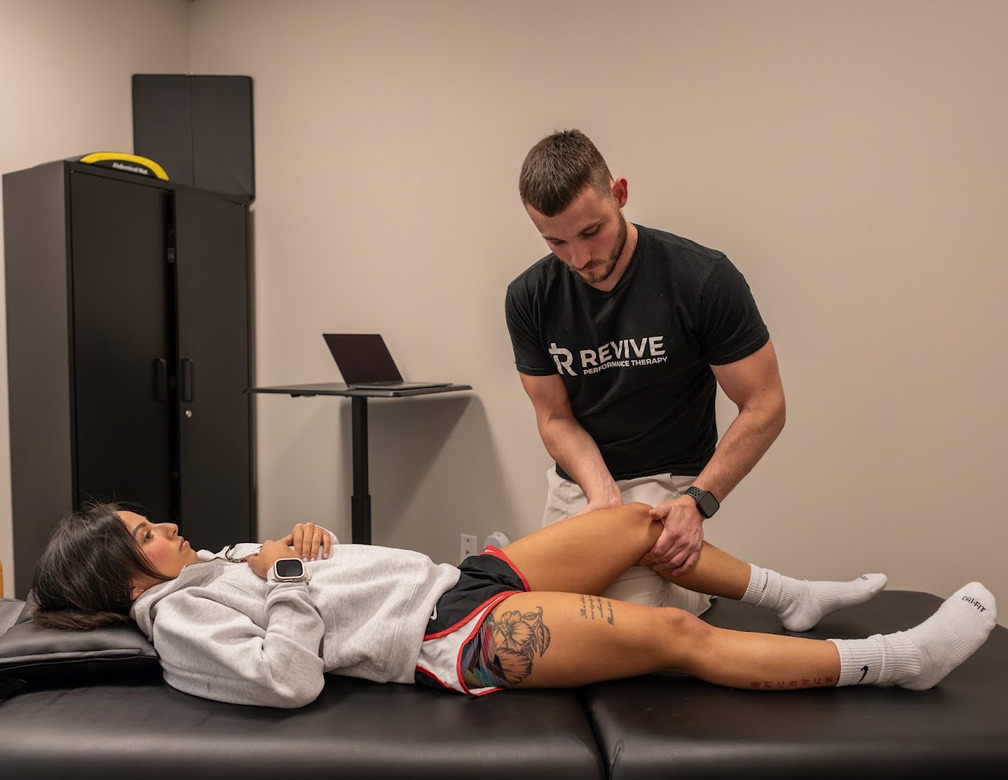Pelvic floor health plays a crucial role in core stability, bladder and bowel control, sexual function, and overall movement. However, many women experience pelvic floor dysfunction without realizing there’s a solution. Whether it’s leakage during exercise, chronic pelvic pain, postpartum recovery struggles, or difficulty with movement, pelvic floor physical therapy can help restore strength, coordination, and control.
At Revive Performance Therapy in Columbus, GA, we specialize in pelvic floor physical therapy designed to help patients move better, feel stronger, and live pain-free. Through a combination of manual therapy, movement retraining, and core integration, our experts provide personalized treatment to address pelvic health concerns and optimize overall well-being.
READ: Performance Enhancement Through Columbus Georgia Physical Therapy: Elevate Your Athletic Abilities
In this guide, we’ll explore the importance of pelvic floor therapy, common conditions it treats, and how Revive PT helps women take control of their health and performance.
What Is the Pelvic Floor and Why Is It Important?
The pelvic floor is a group of muscles, ligaments, and connective tissues that form a supportive foundation at the base of the pelvis. These muscles work together to control bladder and bowel function, support the spine and core, and contribute to sexual health. When they become too weak, too tight, or uncoordinated, it can lead to discomfort, dysfunction, and movement limitations.
Anatomy of the Pelvic Floor and Its Role in Core Stability
The pelvic floor works as part of the deep core system, along with the diaphragm, abdominal muscles, and lower back. When functioning properly, it helps:
- Maintain bladder and bowel control by contracting and relaxing as needed.
- Support internal organs such as the bladder, uterus (in women), and rectum.
- Enhance posture and movement stability by working with the core and hips.
- Improve sexual function and comfort by promoting healthy blood flow and muscle coordination.
Signs That Indicate Pelvic Floor Dysfunction
Pelvic floor dysfunction is more common than many people realize. Some of the most frequent signs include:
- Leaking urine when sneezing, coughing, running, or lifting.
- Frequent urgency to urinate or difficulty emptying the bladder.
- Pelvic or lower back pain that doesn’t resolve with traditional treatments.
- Pain during intercourse or difficulty with sexual function.
- Feelings of heaviness or pressure in the pelvic area, possibly indicating prolapse.
READ: Exploring Payment Models: Cash Pay vs. Insurance-Based Columbus Physical Therapy
If you experience any of these symptoms, pelvic floor physical therapy can help restore strength, coordination, and function—leading to improved comfort and confidence in daily life.
At Revive PT, we take a whole-body approach to treating pelvic floor dysfunction, addressing movement patterns, posture, and muscle imbalances to provide long-term relief.
Common Pelvic Floor Conditions Treated with Physical Therapy
Pelvic floor dysfunction can lead to a wide range of symptoms that affect daily life, movement, and overall well-being. Many people assume these issues are just part of aging, postpartum recovery, or high-impact activities—but in reality, they are treatable with pelvic floor physical therapy. At Revive PT, we specialize in helping women regain control, reduce pain, and improve function through evidence-based treatments.
Urinary Incontinence
Urinary leakage is one of the most common signs of pelvic floor dysfunction. It can occur due to weak or uncoordinated pelvic muscles and may present as:
- Stress incontinence – Leaking urine when sneezing, coughing, or exercising.
- Urge incontinence – A sudden, strong urge to urinate with little warning.
- Mixed incontinence – A combination of both stress and urge incontinence.
Physical therapy can strengthen and retrain the pelvic muscles, improving bladder control and reducing reliance on pads or medication.
Pelvic Pain and Tension
Pelvic pain can result from muscle tightness, nerve irritation, or postural imbalances, leading to:

- Pain during intercourse (dyspareunia).
- Chronic pelvic pain affecting daily activities.
- Post-surgical discomfort from scar tissue or muscle restrictions.
Pelvic floor therapy uses manual therapy, relaxation techniques, and neuromuscular retraining to ease tension and restore natural movement.
Pelvic Organ Prolapse
Pelvic organ prolapse occurs when the bladder, uterus, or rectum shifts downward due to weakened pelvic support. Symptoms may include:
- A heavy or bulging sensation in the pelvic area.
- Discomfort when standing for long periods.
- Difficulty emptying the bladder or bowels.
Through targeted strengthening exercises and postural corrections, physical therapy helps support pelvic organs and reduce symptoms without surgery.
READ: A Complete Guide to Columbus Physical Therapy for Athletic Performance
Postpartum Recovery and Core Rehabilitation
Pregnancy and childbirth stretch and weaken the pelvic floor muscles, leading to issues such as:
- Diastasis recti (abdominal separation).
- Pelvic pain and instability.
- Urinary leakage or prolapse symptoms.
Pelvic floor therapy helps new mothers restore core strength, improve stability, and return to exercise safely.
Pelvic floor dysfunction is treatable, and early intervention leads to better outcomes. If you’re experiencing any of these symptoms, pelvic floor therapy can help you move and feel better.
How Revive PT Treats Pelvic Floor Dysfunction
At Revive PT, we take a comprehensive, whole-body approach to pelvic floor therapy. Rather than just treating symptoms, we focus on identifying the root cause of dysfunction and developing a customized treatment plan to restore optimal function, strength, and control.
Comprehensive Evaluations for a Personalized Approach
Every patient’s experience with pelvic floor dysfunction is different. That’s why we start with a detailed assessment, which includes:
- Pelvic floor muscle function testing to assess strength, flexibility, and coordination.
- Postural and movement analysis to identify imbalances that contribute to symptoms.
- Breathing assessments to ensure proper diaphragm-pelvic floor connection.
- Functional screenings to determine how pelvic dysfunction affects daily activities and exercise.
Manual Therapy for Pain Relief and Muscle Relaxation
Pelvic floor dysfunction is often linked to tight, overactive, or restricted muscles. Our hands-on treatments help:
- Reduce muscle tension and improve mobility.
- Release trigger points in the pelvic floor and surrounding muscles.
- Improve blood flow and nerve function to the pelvic region.
Strengthening and Relaxation Exercises for Optimal Function
Depending on whether the pelvic floor muscles are too weak or too tight, we use targeted exercises such as:
- Pelvic floor coordination training to improve muscle control.
- Core and hip strengthening for better pelvic stability.
- Stretching and mobility work to reduce tightness and restore balance.
Breathing and Posture Training for Core Integration
The pelvic floor works closely with the diaphragm and deep core muscles. If these areas aren’t functioning properly, symptoms can persist. That’s why we focus on:
- Diaphragmatic breathing techniques to support pelvic muscle function.
- Postural corrections to prevent excessive strain on the pelvis and spine.
- Functional movement training to ensure long-term success.
Biofeedback and Neuromuscular Re-Education for Better Muscle Control
Many people struggle to properly engage or relax their pelvic floor muscles. Biofeedback and neuromuscular re-education help:
- Improve awareness and coordination of pelvic floor contractions.
- Enhance muscle endurance and response to daily activities.
- Provide real-time feedback to reinforce correct movement patterns.
At Revive PT, our goal is to empower patients with the tools and strategies they need to take control of their pelvic health. Whether you need strength, relaxation, or improved muscle coordination, our therapy programs help you regain confidence, function, and comfort.
The Link Between Pelvic Floor Therapy and Performance
Pelvic floor therapy isn’t just for those dealing with pain or dysfunction—it’s also a powerful tool for enhancing athletic performance and movement efficiency. A well-functioning pelvic floor contributes to core stability, injury prevention, and overall strength, making it essential for both everyday activities and high-level sports performance.
How Core Strength and Pelvic Stability Impact Sports and Movement
The pelvic floor is a key part of the deep core system, working with the diaphragm, abdominals, and back muscles to:
- Improve posture and movement control, reducing strain on the spine and hips.
- Enhance power generation, especially for explosive movements like jumping and sprinting.
- Support proper breathing mechanics, leading to better endurance and energy efficiency.
When the pelvic floor is weak or dysfunctional, athletes may compensate with poor movement patterns, increasing the risk of injury and limiting their full potential.
Preventing Hip, Lower Back, and Knee Injuries with Proper Pelvic Floor Function
Many sports injuries are linked to core instability and pelvic floor dysfunction. A weak or overactive pelvic floor can lead to:
- Hip and groin pain from muscle imbalances.
- Lower back strain due to poor core control.
- Knee injuries caused by improper load distribution.
By correcting pelvic floor function, athletes can move more efficiently, reduce stress on surrounding joints, and prevent chronic injuries.
Why Athletes, Runners, and Weightlifters Benefit from Pelvic Floor Therapy
Athletes in high-impact and strength-based sports place significant stress on the pelvic floor. Pelvic floor therapy can help:
- Runners by improving stride mechanics and reducing pelvic instability.
- Weightlifters by enhancing intra-abdominal pressure control for safer, more effective lifts.
- Cyclists and endurance athletes by preventing pelvic pain and supporting optimal breathing patterns.
When the pelvic floor is properly trained and integrated into movement, athletes experience better performance, fewer injuries, and improved recovery times.
At Revive PT, we help both competitive and recreational athletes optimize pelvic floor function to move better, train smarter, and perform at their best.
Living Pain-Free and Strong with Pelvic Floor Therapy

Pelvic floor dysfunction can interfere with daily activities, exercise, and overall well-being, but physical therapy provides a proven path to relief and long-term strength. Whether you’re recovering from childbirth, managing chronic pain, or looking to improve movement efficiency, pelvic floor therapy can help restore function and confidence.
How Revive PT Helps Patients Eliminate Pain and Regain Control
At Revive PT, we take a patient-centered approach, designing individualized treatment plans to help you:
- Address pain and discomfort by improving muscle coordination and mobility.
- Enhance core strength and stability for better movement in daily life and sports.
- Regain bladder and bowel control through targeted training and muscle retraining.
Success Stories from Men and Women Who Improved Their Pelvic Health
Many people come to pelvic floor therapy after years of struggling with discomfort and limited mobility. With the right treatment approach, they’ve been able to:
- Resume running, lifting, and exercising without fear of leakage or pain.
- Improve core stability and posture, leading to fewer injuries.
- Regain confidence in bladder and bowel control for a more active lifestyle.
The Benefits of Long-Term Pelvic Floor Care for Overall Well-Being
Pelvic floor therapy is more than just a short-term fix—it’s an investment in long-term strength, function, and quality of life. Maintaining pelvic health helps:
- Prevent future injuries and chronic pain.
- Improve sexual health and overall confidence.
- Support lifelong mobility, balance, and movement efficiency.
At Revive PT, our goal is to empower every patient to move pain-free, feel strong, and take control of their health.
Getting Started with Pelvic Floor Therapy at Revive PT
Taking control of your pelvic health is a step toward greater strength, mobility, and confidence. Whether you’re dealing with pain, incontinence, or performance limitations, pelvic floor physical therapy can help you move better and feel stronger.
What to Expect During Your First Session
At Revive PT, your journey begins with a comprehensive evaluation to understand your unique needs and goals. During your initial visit, you can expect:
- A detailed discussion about your symptoms, lifestyle, and movement history.
- A full-body movement and posture assessment to identify contributing factors.
- A gentle pelvic floor evaluation, if appropriate, to assess muscle function.
- A personalized treatment plan tailored to your recovery and performance goals.
How to Schedule a Consultation and Take the First Step
Getting started is simple:
- Visit Revive PT’s website to learn more about our services.
- Book an appointment through our online scheduling system or call our office.
- Prepare for your session by wearing comfortable clothing and bringing any relevant medical history.
Why Early Intervention Leads to Better Outcomes
Pelvic floor dysfunction is often overlooked, with many people waiting months or even years before seeking treatment. However, early intervention can lead to faster recovery, reduced pain, and long-term improvements in strength and mobility.
At Revive PT, we are committed to helping you move pain-free, regain control, and enhance your overall health and performance. If you’re ready to improve your pelvic health, our expert team is here to guide you every step of the way.

